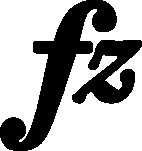



|
b. 310
|
composition: Op. 44, Polonaise in F♯ minor
..
In the main text we include the category imprint: Differences between sources |
|||||||||||
|
b. 310
|
composition: Op. 2, Variations, complete
..
The wedges in the editions resulted from the engraver of GE1 having misinterpreted the authentic dots. In GE3 wedges were arbitrarily added over the chords too (cf. bar 305). category imprint: Differences between sources issues: GE revisions , Wedges |
|||||||||||
|
b. 310
|
composition: Op. 2, Variations, complete
..
The differences in the range of the category imprint: Differences between sources issues: Scope of dynamic hairpins , Errors in GE , GE revisions , FE revisions |
|||||||||||
|
b. 310
|
composition: Op. 49, Fantaisie in F minor
..
The difference in the position of category imprint: Differences between sources; Corrections & alterations issues: EE revisions , Corrections in A |
|||||||||||
|
b. 310
|
composition: Op. 49, Fantaisie in F minor
..
The staccato marks for the right and the left hands were probably added by Chopin to A later (after [FC] had been finished), like many other indications in this fragment. In GE the wedge over the R.H. chord was considered a carelessly written dot, which is very frequent in the B & H editions. category imprint: Differences between sources issues: Inaccuracies in GE , Wedges |

 in
in  in
in  &
&  in
in